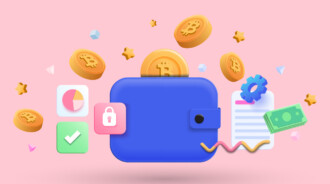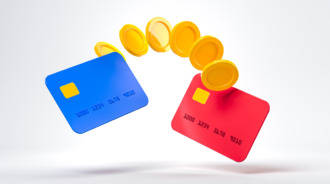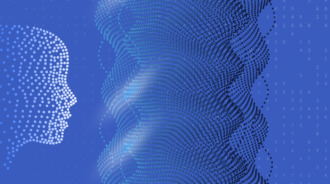

Satoshi Nakamoto, who invented blockchain, could have never imagined this, but the blockchain can act as a real defense against the raging #MeToo harassment that has already destroyed many lives merely only on the basis of a statement about harassment in. The beta version of the LegalFling dating app offers potential partners to conclude an irrevocable smart contract before sex, which would remain in the blockchain ecosystem forever. After it’s signed by both parties, neither will be able to go to court, and the whole procedure takes just a few seconds.
Blockchain – the future is already here
What is blockchain technology? Initially, people started talking about bitcoin and blockchain simultaneously. It was compared to a road junction for the new mysterious digital money. Bitcoin creators place blame for the problems of the economy on intermediaries, bankers, “trusted” third parties who cannot really be trusted. Blockchain and cryptocurrencies were supposed to solve all these issues. 8 years after the creation of the first digital ecosystem, this technology started to be used for more than transfer of funds. Blockchain technology definition incorporates both an encryption system and the basis of the economy of the future.
What is the blockchain concept?
How does blockchain work? Blockchain is a continuous sequence of information blocks built according to certain rules. After receiving any information, the network records it in immutable segments, or blocks. Copies of block chains are stored on many different, independent computers. Network members are both its resource and guarantors, and as long as at least one of the servers is active, the system can exist. This digital chain is called distributed ledger technology. Digital coins or cryptocurrencies are only a side derivative of the process of maintaining an entire ecosystem of blocks.

All blockchain ecosystems are completely autonomous, although cross-platform solutions are already under development. In addition to restricting rights, developers also offer multi-level solutions. Thus, millions of infinitely scalable ecosystems with their own rules and functions can exist simultaneously.
Every subsequent block is connected to the previous one through its content – a set of records.
Finished blocks store all of the information in the chain, starting with the first block, and new blocks are added at the end. So, the blockchain gradually grows like a snowball, and it is impossible to return to the beginning and correct any initial data. All blocks are in strict chronological order and are interconnected by a cryptographic signature, functioning as a complex mathematical algorithm. Any change in the system is accompanied by a cryptographic signature, that is, after the transaction is completed and recorded in the chain, all the network nodes know about it. At the same time, the process of changing even a single pixel is controlled by many computers.
So, how does blockchain support data privacy? Operations within the network are recorded and processed autonomously, without involving third-party services. Distributed registry technology presumes that the current state of the blockchain at a particular point in time is downloaded, synchronized and provided by hundreds of thousands of computers around the world, or nodes. When a new block appears in the network, all nodes update their blockchain. The nodes store the full, up-to-date version of the blockchain, and the rest of the computers turn to them if they need to verify any data.
Only verified data gets into the blockchain. Verified, valid information is written into the block and remains in the blockchain forever, and anyone can verify its authenticity. In this case, the transaction will be considered valid if it is confirmed by several independent nodes.
Practical use of the blockchain
Blockchain and cryptocurrencies are inseparable concepts. But the first does not just concern digital coins – it can be used in any interconnected information blocks and registries. Potential uses of blockchain technologies are endless. Blockchain allows to automate the process of unalterable recording of data and confirmation of events using the distributed principle of information storage.
The data written to the block is split into keys and sent to all servers that support a particular ecosystem. No hacker would be able to change them – the network won’t confirm the changes. Since the distributed registry of information block chains is stored on different computers, any user with access to it can check the availability and integrity of this data. Forgery is impossible.
The mass introduction of blockchain allows to get rid of intermediaries in transactions: you no longer need a notary to sell an apartment or an agent to verify the data – the blockchain will save all this information, and after the transaction is completed, it will enter the new ownership data in the register.
We now have an idea of how blockchain works, and it’s time to find out what its uses are. Ut has already shown its practical relevance in a number of areas. Here are some of its real-world benefits:
- Reduction of transaction costs – there is no need to involve any intermediaries or guarantors, be it notaries, lawyers or even a simple data storage database, all information will forever fix the corresponding block in the ecosystem.
- Reducing the time of transactions. Even bitcoin had problems with performance, that is, with network patency, but it was he who made it possible to eliminate this problem. Segwit, as a practice of chain separation and the formation of a second level of tokens for specific enterprises or operations, are already well-established practices for solving problems with cross-country ability. Depending on the network load, without the participation of the operator, the transfer or recording will be processed within a couple of minutes or instantly.
- Getting rid of unnecessary expense items – access to the blockchain does not require special resources and knowledge. Operators working in the network create ready-made solutions that, based on a visual interface, will carry out all operations automatically.
What is a blockchain’s main advantage? It’s the guarantee of irrevocability. Even in a banking structure, you can make a payment, and then, by undoing the transaction, deceive the counterparty. This would be impossible in the blockchain, and if a transfer happens along with a counter transaction (i.e., when exchanging currency or signing copyrights), the system will perform the operation, forever preserving it in history.
The smart contract technology has great potential, and its business application prospects are extensive. Blockchain allows to save not only records of transactions and transfers of funds, but generally any information that can be recorded in digital form, including executable computer code. It can be written in such a way that it’s launched when the cryptographic keys are entered by two counterparties who have previously decided to cooperate on certain conditions.
History of blockchain is rather short, in fact, most consider blockchain the future that has already arrived. It is actively used by the banking sector to store records of transactions and when conducting exchange transactions. In 2020, airlines began to actively use this technology – when ordering tickets, users can instantly reserve their seats in a distributed registry. Administrations, law enforcement agencies, electoral committees – you name it, and there’s a need for blockchain transparency.Blockchain and cryptocurrency are the best-known combination: cryptocurrencies and tokens, which replace fiat money, are already recognized as legal tender in many countries.

How does a blockchain work?
Blockchain has been around for a very long time, being proposed for the very first time in 1991 as a research project. It already existed as a concept before Bitcoin even became a thing later in 2009. Following the release of Bitcoin, blockchains gained widespread popularity through non-fungible tokens, decentralized finance, smart contracts, and cryptocurrencies.
Blockchain promotes the recording and distribution of digital information without editing it. Basically, it acts as a base for transaction records that cannot be destroyed, deleted, or modified.
Once a blockchain transaction begins, it is sent to a network formed from different peer-to-peer computers spread all around the planet. Then, the computer network deals with different equations and solves them in order to verify whether the transactions are valid.
Next, as soon as the legitimacy of the transactions is confirmed, they are grouped into blocks, then connected in order to create a lengthy transaction history. The transactions in this chain are permanent. Following this step, the transaction is completed.
Blockchain decentralization
The greatness of blockchain comes from the fact that all the data is held in a database and is distributed along multiple network nodes found in various locations. As such, the data that gets stored will stay loyal to the rest of the network. So, in case an individual will try to make changes to any record from the database, it wouldn’t be possible to alter the other nodes.
This means that if someone would modify their node with bad intent, it would be considered illegitimate and would therefore be cast away. Detecting the problematic node would be an effortless process for the other nodes.
The history and information in the blockchain are permanent and thus cannot be changed.
Is blockchain secure?
Blockchain is very secure due to the way it’s been established.
Any new block is stored in a chronological line and added to the bottom of the blockchain. Once it becomes part of the blockchain, modifying any of its contents is challenging, particularly if a large part of the network agreed to do it.
All blocks have their own hash, while the blocks before them have one as well. A hash is a code that is made through a mathematical function that creates a string of letters and numbers from digital information. Whenever a change is made to any of that information, the hash code will also shift.
Besides, they have a timestamp that shows the time they were added to the chain.
A hacker would have little to no chance of success if they tried to steal people’s cryptocurrency. For instance, if they owned a node on a particular network, then wanted to make changes to it in order to steal, their copy would quickly be declared illegitimate. It wouldn’t fit with the copy everyone else owns. So, when comparing all copies against each other, the one that doesn’t align would get thrown out. That’s what makes the blockchain so secure.
The only way a hacker would be successful is if they were in charge of 51% or more blockchain copies and worked to alter all of them. This way, the new copy would take over the rest. It’s hardly unlikely for someone to go to such lengths to steal cryptocurrency because they would need not only lots of resources but also plenty of money.
Blockchain vs. banks
Banks and decentralized blockchains have multiple differences.
For instance, Bitcoin is open 24/7 and available 365 days a year. Meanwhile, your typical banks are usually open from 9 A.M. to 5 P.M. during business days. On weekends, most banks that are still open have a shorter program, closing earlier. On top of that, on bank holidays, all banks are closed.
In terms of transaction speeds, it takes around 15 minutes for a Bitcoin transaction to be completed. But bank transactions take longer – checks take 24-72 hours to clear, card payments take 24-48 hours to complete, wire payments take 24 hours if they are not international, and ACH takes 24-48 hours. During bank holidays or weekends, bank transfers do not get processed.
It’s possible to track Bitcoin, but the owner can stay anonymous, whereas a bank’s private server stores all clients’ personal information. As for security, Bitcoin networks are very secure as they get bigger. Banks are also secured, but the amount of security depends on the bank’s servers.
All you need to transfer Bitcoins is an Internet connection, as well as a mobile phone. Banks require more factors, like a mobile phone, bank account, and government-issued identification.
Benefits of blockchains
Blockchains have various benefits, including:
– Lower costs due to no third-party verification being present
– Transparency
– Secure, efficient, and private transactions
– More accuracy due to the human involvement in verification being removed
– They’re harder to alter due to decentralization
Drawbacks of blockchains
There are also some downsides to blockchains, such as:
– Low per-second transactions
– Mining Bitcoin involves increased technology cost
– Limitations on data storage
– Illicit activity history
– Each jurisdiction has its own regulation, being uncertain in some areas








